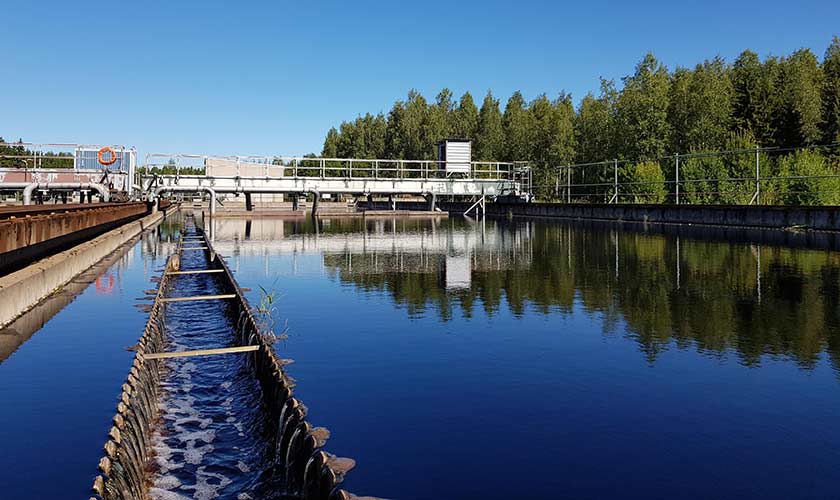Throughout my 20-year career in Stora Enso, environmental questions have been a common denominator. In the past couple of years I have had the privilege to work with an exciting project in the Anjala Mill, in Finland, where we are using digital solutions to make predictions that help us operate our wastewater treatment plant in the best possible way.
So, what’s a wastewater treatment plant? Besides wood fibres, water is an essential ingredient in the pulp and paper manufacturing process. Water helps to both dissolve and bleach the wood fibres we use. In Stora Enso, we are careful to minimise the water usage, re-use water where possible, and clean the water before it is let back out into the environment. The latter part is where the wastewater treatment plant comes into play. It is the heart and lungs of the cleaning process before the water from our production is released back into the natural environment.
Our challenge has been that production levels in the mills fluctuate, and that in turn affects not just the amount of wastewater that needs to be cleaned but the quality of the water that needs to be cleaned. The wastewater composition is controlled by laboratory staff and then it is decided how many nutrients (phosphorous and nitrogen) that should be added to the water. These nutrients are used to create the best conditions for the bacteria that clean the wastewater. Now, this is a complex process. You have to monitor the wastewater plant performance and ensure the correct nutrient dosage, in real-time. And if the nutrients are not added in a timely and accurate manner, we could potentially face issues with disturbances and delays in the wastewater cleaning process.

We’ve worked to solve these challenges and over the last couple of years we have developed a solution that works in several steps. The result is now a fully digital solution which learns from past events and data and uses predictive algorithms to simulate the future. By using process data from the mill, together with sensors in the water, the solution gives advice on how many nutrients should be added to the water. It also tells us how much biomass the bacteria will produce. This biomass then needs to be removed from the plant. Simply put, the wastewater treatment plant operators now have access to real-time advice on how to run the plant in the most optimal way.
We are also now starting to reap the benefits from the project. We spend less time on laboratory measurements. We have freed up the time our operators spend on disturbances and troubleshooting. Instead, they can focus on normal operations and continuous improvement activities. We are also starting to gain savings from an optimised nutrient dosage.
The project has been proceeding very well and delivered the expected outcomes but it hasn’t been plain sailing. We have learnt a lot on the way. One lesson is that data must be ‘top of mind’ when initiating the set-up of predictive solutions. Right from the start, we have to think about what data will be needed, at what frequency, where we should get it from, and so on. Without the right data availability, the solution doesn’t work. It has also proved to be beneficial to start out small and do several iterations to test the concept. We were able to do this with the help of our Stora Enso Group Digitalisation Fund. The fund means that anyone, anywhere in the company, can apply for money for a digitalisation project to test out a new technology and solution, and if it proves successful they can apply again to fund a scale-up of the solution.
Looking ahead, the next steps in Anjala will be to continue developing the digital solution for the wastewater treatment plant, with even more control parameters to give additional information to operators. From a company perspective, the solution has been rolled out to more of our mills across the globe and the rollout continues.
In conclusion I would like to mention that as a 700-year old company, innovation has become an integral part of our DNA. Our strategy comprises both innovation and start-up collaborations to ensure we continue to stay in the forefront of the circular bioeconomy. A few areas which we are working on, or investigating, to further power our digital solutions portfolio within sustainability are: Supply chain optimisation solutions, digital solutions to increase efficiency and sustainability in the wooden building industry, technologies for purifying recycled materials, etc. We are of course also working with other digital solutions which are indirectly contributing to sustainability – for example artificial intelligence (AI) solutions to predict maintenance needs for mill equipment, as well as AI to predict and manage pulp quality. Both of these are contributing to less waste in the end.
My prediction is that digitalisation and new technology will only grow in importance when we pave the way into a sustainable future – where we aim to do good for both people and the planet!






